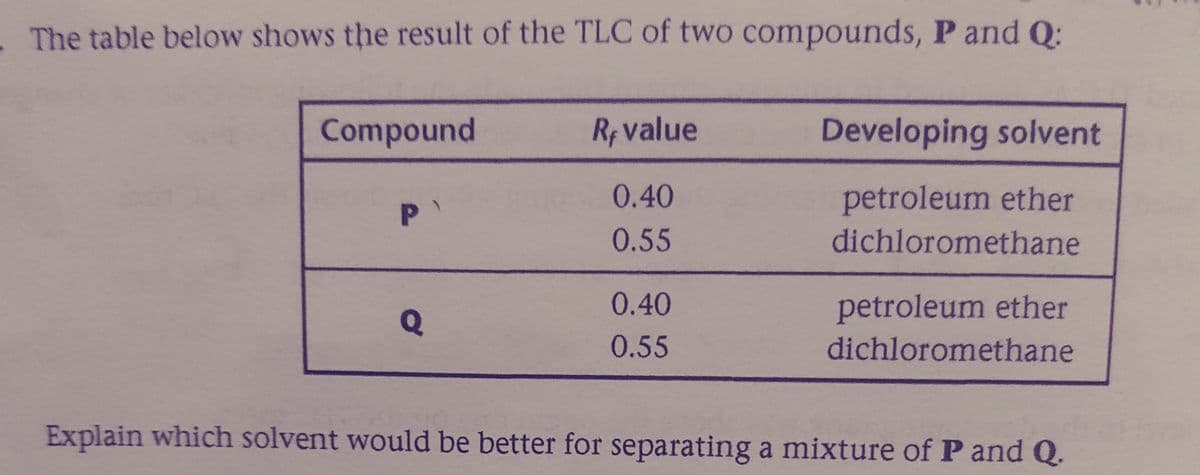The table below shows the result of the TLC of two compounds, P and Q: Compound R, value Developing solvent 0.40 petroleum ether 0.55 dichloromethane 0.40 petroleum ether Q 0.55 dichloromethane Explain which solvent would be better for separating a mixture of P and Q.
The table below shows the result of the TLC of two compounds, P and Q: Compound R, value Developing solvent 0.40 petroleum ether 0.55 dichloromethane 0.40 petroleum ether Q 0.55 dichloromethane Explain which solvent would be better for separating a mixture of P and Q.
Chapter89: Thin-layer Chromatography
Section: Chapter Questions
Problem 2P
Related questions
Question
100%

Transcribed Image Text:. The table below shows the result of the TLC of two compounds, P and Q:
Compound
Rf value
Developing solvent
0.40
petroleum ether
0.55
dichloromethane
0.40
petroleum ether
0.55
dichloromethane
Explain which solvent would be better for separating a mixture of P and Q.
Expert Solution
This question has been solved!
Explore an expertly crafted, step-by-step solution for a thorough understanding of key concepts.
Step by step
Solved in 2 steps

Knowledge Booster
Learn more about
Need a deep-dive on the concept behind this application? Look no further. Learn more about this topic, chemistry and related others by exploring similar questions and additional content below.Recommended textbooks for you

EBK A SMALL SCALE APPROACH TO ORGANIC L
Chemistry
ISBN:
9781305446021
Author:
Lampman
Publisher:
CENGAGE LEARNING - CONSIGNMENT


Principles of Instrumental Analysis
Chemistry
ISBN:
9781305577213
Author:
Douglas A. Skoog, F. James Holler, Stanley R. Crouch
Publisher:
Cengage Learning

EBK A SMALL SCALE APPROACH TO ORGANIC L
Chemistry
ISBN:
9781305446021
Author:
Lampman
Publisher:
CENGAGE LEARNING - CONSIGNMENT


Principles of Instrumental Analysis
Chemistry
ISBN:
9781305577213
Author:
Douglas A. Skoog, F. James Holler, Stanley R. Crouch
Publisher:
Cengage Learning